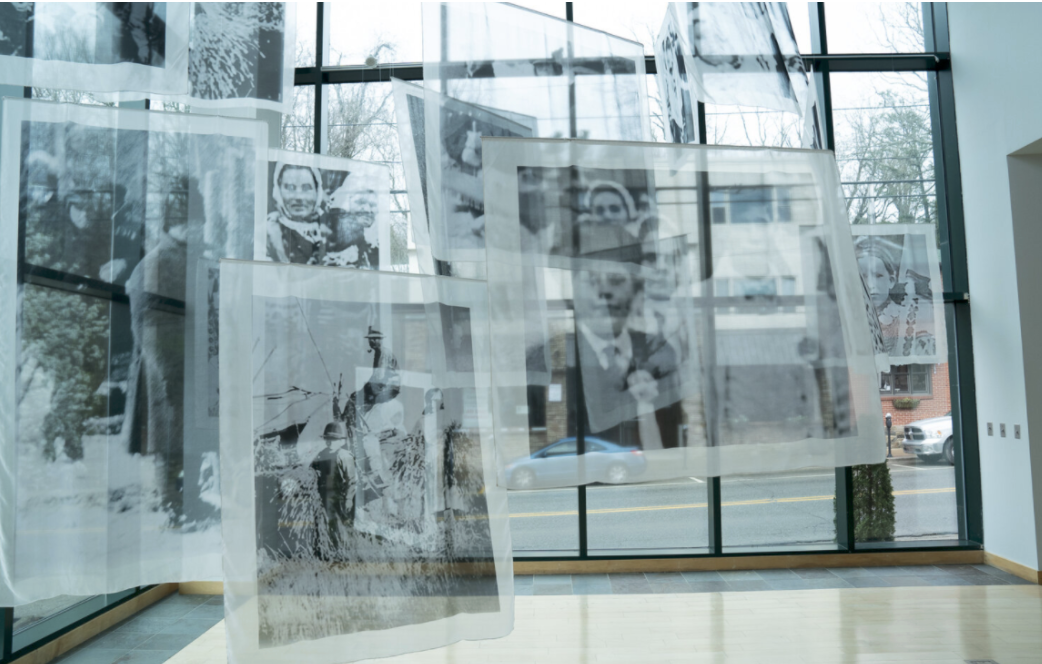
Project MARIA aims to create a memorial which facilitates the construction of collective memory.
“This work, the second movement of On Genocide, began as did the first ERASURE: Memory and the Politics of Memory. I was triggered by the realization that Russia’s war against Ukraine relies on weapons like disinformation, denial, and obfuscation. Ones normalized decades earlier and used to suppress information on Stalin’s 1932-33 state-sponsored death by starvation in Soviet Ukraine, the Holodomor. This event remains largely ignored in the context of global genocides with its victims numbering in the millions and descendants innumerable.
When (re) working this project, the #BlackLivesMatter movement on both sides of the Atlantic were revising the role and presence of monuments and the celebration of public figures responsible for the proliferation of slavery. The presence of over-sized, public, figurative sculpture has never been more widely discussed.
In addressing the occlusion of the Holodomor, I would construct a mobile memorial that avoids the physical and monolithic language and form of traditional memorials by making a mobile work through which the active participation of audiences from a range of locations and cultures works to unconceal knowledge of this event.”
Maruschak does not think the of the significance of existing memorials, but how to account for the construction of a memorial that has yet to exist, for an event that is largely absent from wider social awareness. Her years of research allow her to identify what to avoid, and what and how to include. Rather than start with the memorial as object, she starts with the people who suffered and died at the hands of a brutal regime. Public engagement with memorials, the rituals attached to them, and events that both cement and challenge both personal and collective memory are her foci.
Maruschak’s strategy is an attempt to negate an imposition of authority and adopt one of communion with the participating public. Consequently, she considers herself less of an author and more of a conduit for the memory of the Holodomor. This position is sympathetic to her use of historical photographs, employing the materiality of photographic media, and a process of selection, production and presentation that avoids an authoritative reading and ordering of the work. This approach allows viewers as participants to negotiate their own progress through the work and actively build their own interpretation of the memorial, and, their own awareness of this historical event. To put it simply, it is a case of the participant finding out rather than being told.
Maruschak abandons the memorial statue - the permanent, large, heavy work in 3 dimensions that remains separate and removed from physical engagement by the viewer and pronounces a separation between the memorialised and the memorialising public. Using sculptural paper works, film, reconstructed archival objects and textiles, she provides a means by which the viewing public can actively participate and contribute. Here the social and political division between the figures of authority that erected the artefact, and the viewing public that are implored to view the work via its lofty position on a plinth are neutralized. Instead, the story of a survivor, Maria F. brought to life through metaphor, expresses the loss and pain that crimes against humanity inflict, many of which have been normalized and continue today.
POSTER PROJECT (2)
Working with London-based graphic designer Sarah Boris, Maruschak wanted to signify the importance of the term Holodomor and its absence from modern day English language dictionaries. She arrived at a definition implicating the state’s role in this brutal historic event. Using the colors of Ukraine’s flag, two posters were designed. They were made available for all visitors to the premiere exhibition of Project MARIA in Ukraine, National Museum of the Holodomor Genocide, Kyiv. (2020).
EXHIBITIONS (3)
AWARDS (11)
2020 Project MARIA, Winner Architecture of Memory, Landskrona Fotofestival, Landskrona, Sweden
2019 MARIA Shortlist Prix du Livres, Recontres d’Arles, Arles, France
2019 MARIA, Winner Experimental Category, Kyiv Arsenal International Book Festival, Kyiv, Ukraine
2019 MARIA Grand Prix, Best Book Award, Kyiv Arsenal International Book Festival, Kyiv, Ukraine
2019 MARIA Athens Photography Festival, Shortlisted
2019 MARIA The Director’s Choice Award, CENTER Review Santa Fe, New Mexico
2017 Hariban Benrido Collotype Shortlisted, Japan
2018 MARIA Biennal Grant, Shortlisted
2018 MARIA 12th Pollux Award, Series Winner, Human Rights and Segregation
2018 12th Pollux Award, Honorable Mention, Documentary and Reportage
2018 12th Pollux Award, Honourable Mention, Digital Manipulation
BOOKS (2)
TEXTS (17)
THE GUARDIAN, You Must Remember This
ALISON NORDSTROM From Ashes, TRANSFIGURATION
AMY PARISH TRANSFIGURATION, LENSCULTURE
MARY ANNE REDDING Curatorial Essay
ROBERTO MUFFOLETTOP roject MARIA, Project VASA
SABINE TANOVIC Interspersed Memory, TRANSFIGURATION
MARIA KARINA BOJIKIAN Maria, THE EYES
Alison Nordström From Ashes, Book Arts arts du livre Canada
Gabriela Cendoya Photobooks of 2019
MARY ANNE REDDING, CURATORIAL ESSAY
JUNE CHAU, AWARD RABBLE
MARIA KARINA BOJIKIAN, MARIA, THE EYES
Memorial Victims Holodomor, MARIA
Yogurt Magazine, Italy
Youthpassageways
DODHO, TRANSIFGURATION, Spain
Maxine Watts Lenscratch, RECLAIM PHOTOGRAPHY FESTIVAL
SPONSOR Project MARIA Tour of Ukraine 2020-2023










